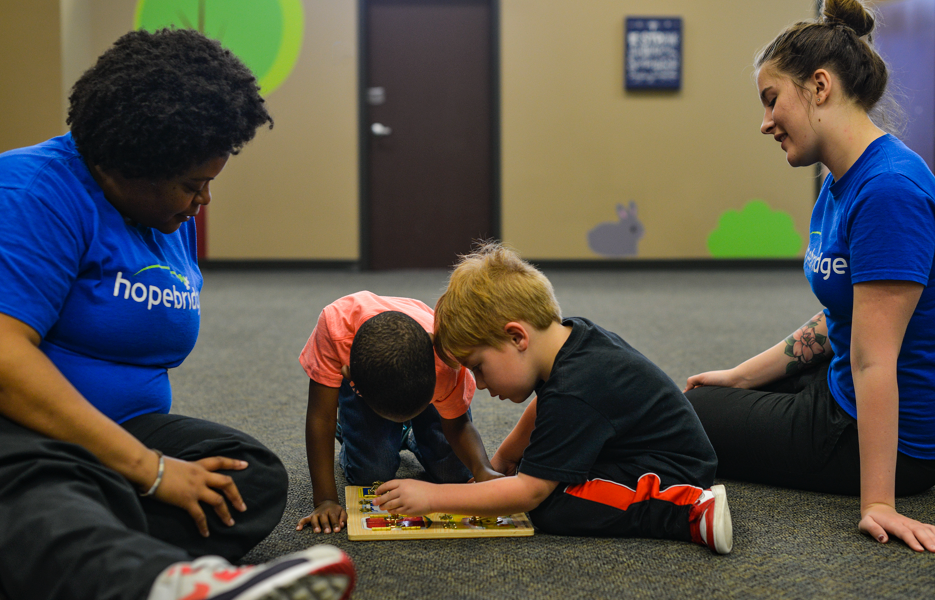Hopebridge’s Lessons from ‘The Good Doctor:’ Making Friends
March 05, 2018
March 05, 2018

Whether trying to make new friends on the playground or network at a business event, building relationships is sometimes an uncomfortable and awkward experience for anyone. For someone on the autism spectrum, there is a range of reasons why it can be even more difficult.
At Hopebridge, we’ve learned this is common for our kiddos, but characters on “The Good Doctor” showed us that it doesn’t necessarily go away as we get older.
Spoiler alert: if you haven’t watched last week’s episode of
“The Good Doctor,” you may want to pause, go watch it, then come back to us!
After a short hiatus during the Olympics, the show returned last week, and those of us touched by autism can relate to a number of topics discussed in episode 15. They all seemed to stem back to one theme: human interactions.
From debates about hugs to concerns whether a $2,000 tux is “necessary” to gain respect, the desire for human connection and acceptance appears again and again. Conversations between characters showcased reasons why it may be more challenging for someone with autism spectrum disorder (ASD) to make friends than those without it.
As Dr. Melendez expresses, Dr. Shaun Murphy often asks inappropriate questions that stem from characteristics associated with autism, and this occurs several times throughout the episode (e.g. “how much did you pay for your dress?”). Like many others with ASD, it is difficult for his character to understand social cues and communicate in a way that is considered “appropriate” according to social standards. Add that to discomfort around crowds and activities favored by peers, and you can see why creating friendships might be a little tougher.
“If you can’t do anything fun, then how did you get them to be your friend?” Shaun asks a patient going through her own struggles.
This is a question parents of children on the spectrum likely encounter in some way or another, since the definition of “fun” may differ for their family. If this sounds like a worry you have for your child, remember that your expectations of friendships and how they are formed might vary from your kid’s reality. He or she may have fewer (but often closer) friends, friends who you might normally call “acquaintances,” challenges maintaining relationships, and times when your child prefers to be alone…and that’s all ok.

Two boys interacting at Hopebrige
Friends can come from a variety of places and don’t require a child to participate in sports, band, art classes, Boy Scouts or other more traditional extracurricular activities. For a child with autism, personal relationships often start by giving them the opportunity to interact with other children who may have similar needs or desires. Use your child’s interests as a bridge, rather than forcing something new. At Hopebridge, we offer opportunities for kids to engage in and become more comfortable with peer play over time (it takes practice!), in addition to nurturing other crucial communication and social skills that aid in creating relationships.
It’s also important to help your child understand friendship by discussing who a good friend is and is not. This is easier once the basics of communication are down, of course, but can be introduced early and reiterated as he or she grows older. Be specific, include examples and ask questions to provoke thought and understanding, if that makes sense for your child.
What have you experienced regarding friendship and autism? Please feel free to share your stories and any tips for other parents on the Hopebridge Facebook page.
Autism in Entertainment
October 01, 2018
'The Good Doctor' Returns for Season 2 with Lessons on Communication
Autism in Entertainment
October 08, 2018
'The Good Doctor' Highlights the Truth about Autism and Lying
Autism in Entertainment
February 12, 2018
Hopebridge’s Lessons from ‘The Good Doctor:’ More than the Label
Autism in Entertainment
January 28, 2018
Hopebridge’s Lessons from ‘The Good Doctor:’ Social Cues